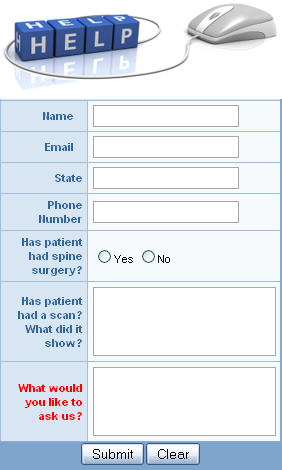
|
The leader in herniated disc treatment; most experienced, best results, superior, world class care. A non-traumatic discectomy can provide an effective way to decompress and repair damaged discs without traumatic, permanent spine-altering surgery.
It is effective, low risk, and allows for a faster return to work and to daily activities. Patients are discharged the same day with just a band-aid.
Many surgeons have started doing somewhat less traumatic spine surgery only very recently, compare that with twenty years of experience in developing the field of outpatient, non-traumatic (spine-friendly) surgery: equipment and techniques. |
|
|
|
Lumbar Discs are the structures, which serve as shock absorbers between the vertebrae of the spinal column. The center of the disc, called the nucleus, is soft and springy and accepts the shock of standing, walking, running, etc. The outer part, called the annulus, provides structure and strength to the disc. The annulus is comprised of a series of interwoven layers of fibrous tissues which hold the nucleus in place.
Back Pain, and related sciatic pain is the price human beings pay for poor posture, prolonged sitting, repeated bending, and other stresses placed on the lower back. The nucleus tissue can be placed under so much pressure that it can cause the annulus to herniate or rupture.
In most cases, simple treatments such as bed rest, physical therapy, exercise, and pain medication bring relief. However, many sufferers are not so fortunate.
When a disc is herniated, it may create pressure against one or more of the spinal nerves which may cause severe pain, numbness, or weakness in the low back, legs and/or feet |
|
|

|